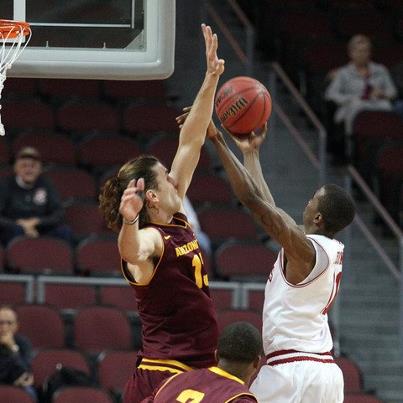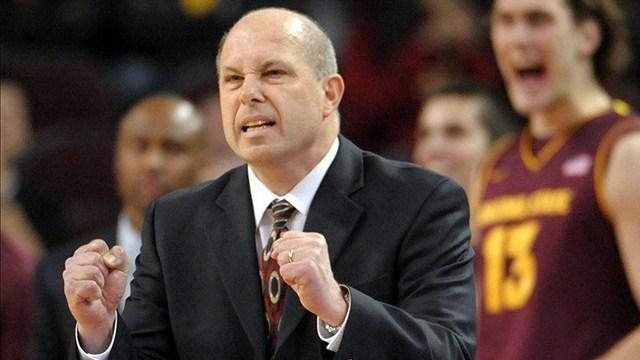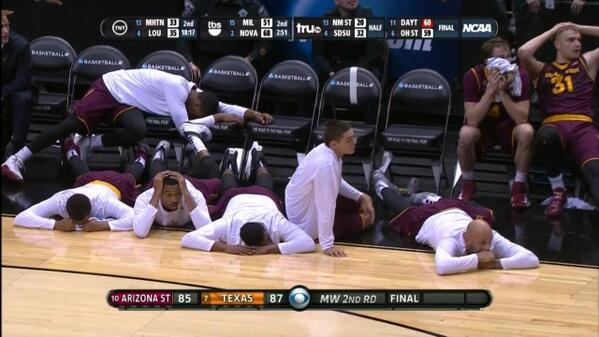Arizona State’s Most Important Player: Willie Atwood
Posted by Tracy McDannald on October 21st, 2014The most important label is a lot like defining a most valuable player — a player’s talent may not necessarily translate into the team’s best, but his presence is discernible. So while Tra Holder and Shaquielle McKissic will shoulder a good chunk of the load as Arizona State looks to replace an all-conference backcourt, the void in the middle this season may be more glaring. The Sun Devils lost Jordan Bachynski, the Pac-12’s Defensive Player of the Year. Look around the league this season and there is plenty of size left to battle, from freshmen Kevon Looney and Reid Travis to juniors Kaleb Tarczewski and Josh Scott. It’s a long way from a 7’2″ safety net and rim protector in Tempe nowadays.

Arizona State has a 7’2″ void in the middle to replace with Jordan Bachynski (left) no longer in uniform.
Looking strictly at height, Eric Jacobsen and Cameron Gilbert are the biggest bodies on the roster at 6’10” each. While Gilbert is just a freshman, Jacobsen made 32 appearances (15 starts) and averaged 2.4 points and 2.3 rebounds per game as a sophomore last season. But neither is the answer here. Rather, head coach Herb Sendek brought in 6’8″ junior college transfer Willie Atwood, who averaged 20.8 points and 9.0 rebounds per game at Connors State in Warner, Oklahoma, for this very reason. But, like many JuCo big men, there is not much else big about his frame. Atwood is listed at 210 spindly pounds and is more likely to steal a few boards from the offensive glass and score off putbacks. Protecting the rim is not a core strength of his, but that’s not where the projected reserve needs to make his mark against the Pac-12’s other bigs. The Sun Devils are looking at Atwood as a stretch four and possible center in spurts, someone to provide much-needed depth in the frontcourt. With more of a face-up than post-up game, he will be asked to use his quickness to take his opponents off the dribble. Execute those moves properly and that could translate into foul trouble for the opposition, and that’s where an effective offense may be just as good as a lockdown defense.
A favorable non-conference schedule awaits to help Atwood transition to the Division I level, and there will be plenty of work to do before the team’s January 4 league opener at Arizona. But early production will be welcome as the Sun Devils await the availability of UNLV transfer Savon Goodman, who will be eligible in mid-December. With a full season under his belt, the most important title would be Goodman’s to carry — and it probably will be come Pac-12 play — but this is Atwood’s chance to emerge immediately.











































